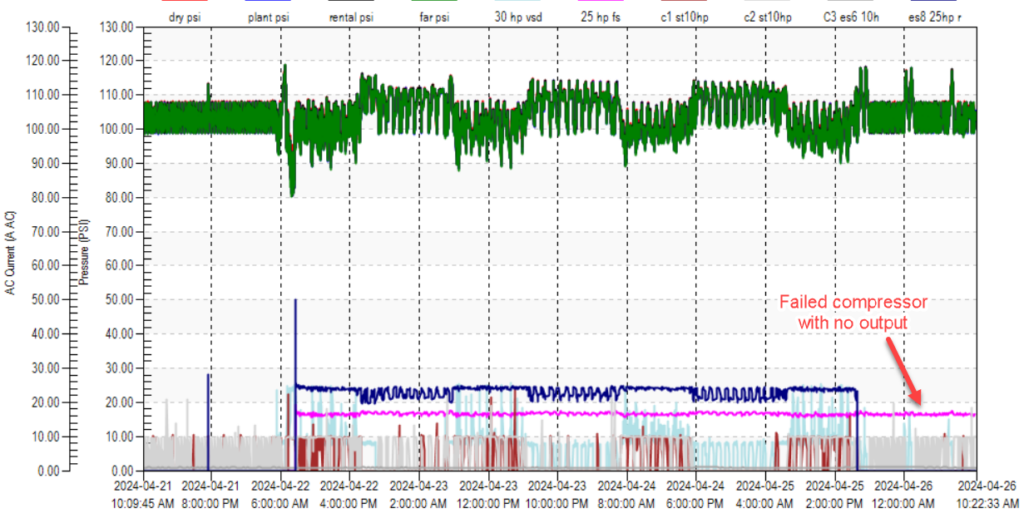A plastic products producer was expanding its business and installed a few new machines. There already were five small compressors installed to feed the production machinery and the maintenance personnel were experiencing low pressure occurrences. These events would pull plant pressure down and cause product rejects and production shutdowns. The plant manager concluded that the additional production had caused a large increase in capacity, so a new compressor was needed.
The local compressor service provider rented the company a small compressor to support the new load. They also called in a compressed air auditor to help them correctly size a new set of compressors to support the growing demand.
The auditor placed data loggers to measure pressure and compressor amps. The plant had no flow meter installed, so this measurement could not be done. The measurement continued for two weeks, after which the data was downloaded and analyzed. The auditor quickly noticed that the weekend amp profile was quite different from one week to the next. On the first weekend, one main compressor was off; the next weekend it was running. However, the apparent calculated flow profile was the same. He checked further and found that this main compressor was consuming only 65% of its rated full load amps. The auditor knew that low amps will usually mean low compressor flow output.

Tests were done and it was found that the ailing main compressor had a control failure that forced its inlet valve fully closed. It was not producing any air, yet it was still consuming considerable power! The low-pressure occurrences were caused by this failure, which reduced the combined compressor capacity by about 40%.
Repairs were made and the system went back to normal, allowing the rental compressor to be removed. Plans are in place to install a flow meter to monitor the output of the main compressors so that similar failures can be easily detected. The flow meter will make it easier to track production flow to determine the correct sizing of any new compressors.
Filed Under: Air Compressors, Components Oil Coolers, Compressed Air Technologies, Pneumatic Tips, Technologies